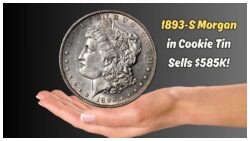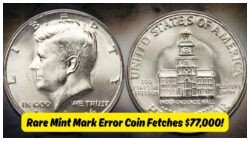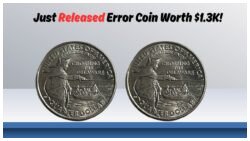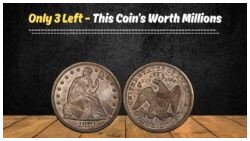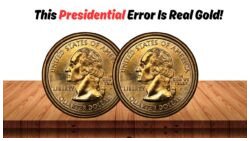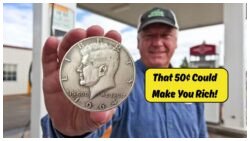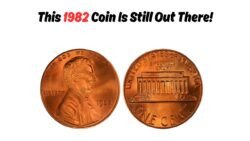Old $500 and $1000 Bills – In a surprising turn of events for collectors and history buffs, old $500 and $1,000 bills from the 1930s are now being sold for staggering amounts—some fetching as much as $150,000. These rare notes, once part of everyday transactions among banks and large businesses, have become highly sought-after collector’s items in recent years. Whether you’ve stumbled across one in a family heirloom box or inherited a collection, these vintage bills could be worth a small fortune today.
Why Are $500 and $1,000 Bills So Valuable?
Most people don’t even know that the U.S. once printed currency in denominations higher than $100. But $500 and $1,000 bills were real—and quite common among financial institutions until the mid-20th century. Here’s why they’re so valuable now:
- Rarity: These high-denomination notes were discontinued in 1969 and are no longer printed or circulated.
- Historical Significance: Many of these bills date back to the Great Depression era, making them significant artifacts.
- Collector Demand: Currency collectors (numismatists) are willing to pay top dollar for well-preserved notes.
- Unique Designs: These bills feature historical figures not seen on current U.S. currency, like William McKinley and Grover Cleveland.
Who Appears on These Bills?
Each high-denomination bill featured prominent historical personalities. Below is a table with key details:
| Denomination | Featured President | First Printed | Last Printed | Discontinued Year | Collector Value Range |
|---|---|---|---|---|---|
| $500 | William McKinley | 1928 | 1934 | 1969 | $2,000 – $75,000 |
| $1,000 | Grover Cleveland | 1928 | 1934 | 1969 | $4,000 – $150,000 |
| $5,000 | James Madison | 1928 | 1934 | 1969 | $10,000 – $200,000+ |
| $10,000 | Salmon P. Chase | 1928 | 1934 | 1969 | $15,000 – $250,000+ |
What Determines the Value of These Notes?
Not all $500 or $1,000 bills will fetch six-figure sums. The following factors influence their market value:
- Condition: Crisp, uncirculated bills command the highest prices.
- Serial Number: Rare or unique serial numbers (like repeating digits) increase worth.
- Issuing Bank: Federal Reserve Bank notes from certain regions are more valuable.
- Series Year: Bills from 1928 are often rarer than those from 1934.
- Authentication: Certified and graded bills have better chances of reaching premium prices.
Where Can You Sell or Buy These Rare Bills?
If you’ve got one of these bills or want to invest in one, here are some legitimate avenues:
Popular Selling Platforms:
- Heritage Auctions
- eBay (highly monitored listings)
- GreatCollections.com
- Private Numismatist Dealers
Recommended Steps:
- Get the Bill Authenticated – Use a reputable currency grading service like PCGS or PMG.
- Check Market Rates – Use auction archives or consult experts.
- Avoid Pawn Shops – They often undervalue collectibles.
- Consider Timing – The market fluctuates, so waiting for a collector boom could help.
Why Did the U.S. Stop Printing $500 and $1,000 Bills?
The U.S. government discontinued high-denomination bills in 1969 due to several reasons:
- Reduced Need: Large transactions were moving toward checks and electronic transfers.
- Crime Prevention: Big bills were frequently used in money laundering and organized crime.
- Cost Efficiency: Printing and maintaining these notes became unnecessary with modern banking.
Real-Life Example: Grandfather’s Drawer to Auction Goldmine
In 2023, a Texas family discovered an old 1934 $1,000 bill while cleaning out their grandfather’s safe. They assumed it was worth face value and brought it to a bank. Thankfully, the teller advised them to consult a currency expert. That bill ended up fetching $92,000 at auction due to its near-perfect condition and rare serial number.
Expert Tips for First-Time Collectors
If you’re considering diving into high-denomination note collecting or checking your stash, follow these guidelines:
- Never Clean Old Bills – Cleaning can destroy collector value.
- Use Gloves – Oils from your skin can damage fragile notes.
- Store Properly – Use archival-quality sleeves and keep in a dry, dark environment.
- Document Everything – Provenance increases value.
- Avoid Scams – Don’t fall for online “we buy rare currency” ads without verification.
Old $500 and $1,000 bills from the 1930s are no longer just relics of financial history—they are high-value collectibles that can sell for tens of thousands, and in rare cases, up to $150,000. With rising interest in historic U.S. currency and limited availability, these bills are poised to appreciate even more in the future. Whether you’re a collector, investor, or someone who stumbled upon a forgotten family treasure, now might be the perfect time to cash in on American monetary history.
FAQs
1. Are $500 and $1,000 bills still legal tender?
Yes, they are still technically legal tender, but banks do not issue or circulate them anymore.
2. Can I use a $1,000 bill at a store today?
Technically yes, but most retailers won’t accept it due to unfamiliarity and the bill’s rarity.
3. How do I know if my bill is authentic?
Use a certified currency grader like PMG or PCGS for official authentication and appraisal.
4. What’s the most valuable $1,000 bill ever sold?
A rare 1928 $1,000 bill in pristine condition sold for over $150,000 at auction.
5. Is it worth collecting old currency?
Absolutely, especially if you focus on rare denominations, unique serial numbers, and historical context.


